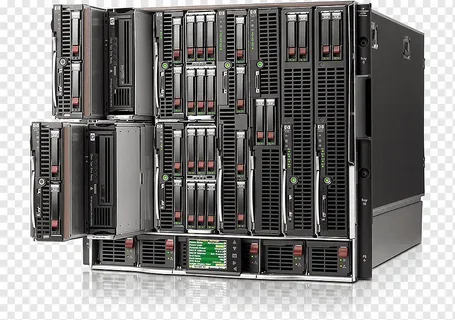
What is an Edge Server?
An edge server is a fundamental component that supplies the necessary computational power and resources for operating applications. The term “edge” signifies that these servers fulfil their functions as close as possible to the applications, the data they rely on, and the individuals or machines using those applications.
Edge servers operate outside of conventional data centers, providing essential functions such as computation, networking, storage, and security near where users require them. This can be in scenarios where data is generated, such as healthcare facilities or manufacturing sites.
While a centralized model for resource delivery remains suitable for various enterprise applications and use cases, it may not always be the most efficient approach in today’s increasingly distributed technology consumption landscape. This shift is particularly evident in areas like the Internet of Things (IoT), 5G, and artificial intelligence (AI).
What Is the Synergy Between Edge and IoT?
From an IoT and mobile perspective, edge computing brings numerous advantages by positioning edge server resources as close as possible to an almost limitless array of connected devices, applications, and the data they generate. This approach effectively eliminates concerns related to latency, performance issues with cloud providers, and other related challenges.
The outcome is usually faster, more reliable user experiences across diverse contexts, be they in business, government, or consumer settings. It also translates to enhanced security controls, a crucial aspect given the increasing volumes of IoT data from applications like smart vehicles and healthcare devices. As these data sets grow, customer concerns regarding security and privacy also escalate.
How Do Edge Servers Operate?
At its core, an edge server is essentially a server that serves as an intermediary between two separate networks. Consider a common interaction between a consumer and a business, such as checking recent transactions through online banking. For security and efficiency reasons, a financial institution would not expose its entire backend to the internet to fulfill this everyday customer requirement. Here’s where an edge server plays a vital role:
The edge server retrieves data from the backend core banking systems that aren’t directly exposed to the internet. As Mark Sami, a director in West Monroe’s technology practice, explains, “The bank exposes an edge server to the internet to present a website to the end consumer. That same edge server is pulling data from back-end core banking systems that aren’t directly exposed to the Internet. Edge servers allow an organization to expose a much smaller footprint of their environment to outside networks, giving them a smaller point of entry to secure.
Edge servers, particularly when designed to cater to very specific use cases, such as industrial equipment sensors or connected video surveillance cameras, often come with granular requirements tailored to these unique functions. In contrast to servers in more centralized public clouds, which primarily focus on generic tasks at scale, edge servers specialize in tasks like network functionality (for video streaming) or inference (for AI-enabled workloads), as noted by Smith from Equinix Metal.
These specialized use cases are becoming increasingly prevalent across diverse enterprises and industries. For instance, Gartner’s predictions indicate that by 2025, a substantial 75 percent of all enterprise data will be generated and processed outside of centralized data centers or the cloud, a significant shift from the mere 10 percent in 2018
In cases such as telco network functions that necessitate service provisioning closer to users, “edge computing helps solve the key challenges of bandwidth, latency, resiliency, and data sovereignty,” observes Rosa Guntrip, senior principal marketing manager, cloud platforms at Red Hat. “It complements the hybrid computing model, where centralized computing can be used for compute-intensive workloads while edge computing helps address the requirements of workloads that require processing in near real-time.”
What Is the Future of Edge Servers? Think 5G and AI Needs
While some may argue that 5G networks are already a reality, the full extent of their potential impact and the significance of edge servers in optimizing 5G performance are yet to be fully realized. Edge servers are pivotal in helping telco companies efficiently manage 5G traffic. For example, edge servers located near cell towers are instrumental in handling the data generated by smart vehicles and cameras.
AI and machine learning are another driving force behind the increasing adoption of edge computing. The availability of substantial computing power has made the cloud an attractive choice for training AI and machine learning models, which can be resource-intensive and potentially overwhelm most organizations’ on-premises environments. Cloud-based edge servers assist in optimizing the interaction between cloud resources and on-premises infrastructure.
An edge server in the cloud allows organizations to access historical analysis or pull down models for use in real-time analytics in their on-premises data. The AI/ML scenario is a prime example of how to centralize heavy computing workloads by utilizing edge servers. If an enterprise wanted to analyze on-premises data in real-time, having an edge server locally with a cloud-trained model allows them to leverage cloud computing power without having to send massive amounts of local data at the point of analysis.”
These developments indicate that edge servers are poised to play an increasingly vital role in the evolving landscape of technology, addressing emerging needs in the realms of 5G and AI.


